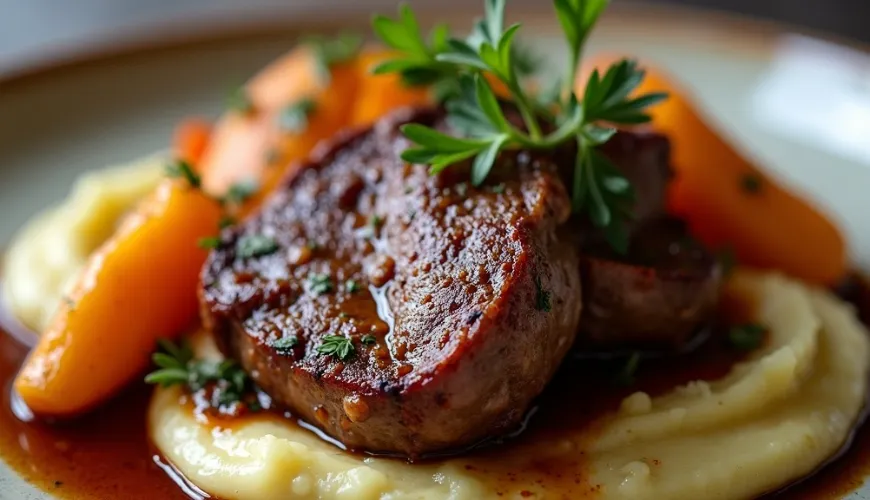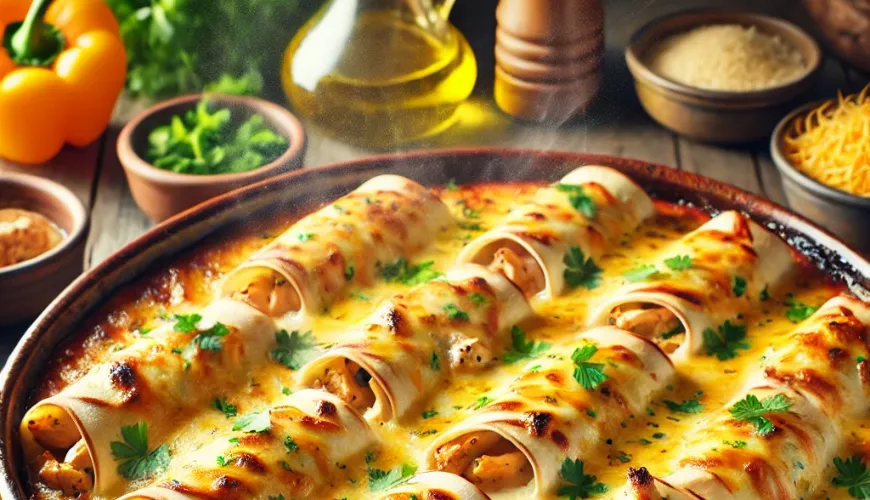
Prepare the best lamb recipe and impress your guests

The Best Lamb Recipe - Tradition, Taste, and Sustainability in One
Lamb is still a somewhat overlooked treasure for many Czechs. Although it is a common part of the diet abroad – especially in the Mediterranean, the Middle East, or England – it appears in Czech kitchens mainly on festive occasions. This is a pity because lamb not only has a distinctive taste but also a high nutritional value, and if it comes from local farms, it can be a very sustainable choice.
Searching for the best lamb recipe is not just a culinary adventure but also a path to a more conscious kitchen. What makes a recipe truly exceptional? It's the combination of quality meat, thoughtful ingredients, and slow cooking that transforms the meat into a melt-in-your-mouth delight. Moreover, if we pay attention to the origin of food while cooking, we respect traditions and nature.
Why Include Lamb in Your Diet More Often?
Lamb is nutritionally very rich – it contains high amounts of proteins, iron, zinc, and vitamin B12. It is easily digestible, and when prepared correctly, it has a gentle taste that easily combines with various herbs and vegetables. Compared to beef or pork, lamb has a lower share of unhealthy fats and often comes from smaller, more ecological farms. From an ethical standpoint, it is often meat from free-range animals, where animals live in a natural environment and are not fed industrial feed.
Most people who encounter lamb for the first time are concerned about its typical smell or stronger taste. However, these characteristics actually indicate quality meat. With proper preparation, the taste of lamb can be beautifully softened – for example, with garlic, rosemary, lemon, or red wine.
A Traditional Recipe That Won't Disappoint - Slow-Roasted Lamb with Garlic and Herbs
When you say "the best lamb recipe," for many people, it means returning to slow cooking, where the meat is given time to release its natural juiciness and aroma. That feeling when a piece of tender meat with the scent of rosemary and roasted garlic falls apart under your fork is why people return to this recipe again and again.
What you'll need:
- 1 whole lamb leg (approx. 2–3 kg)
- 10 cloves of garlic
- Fresh rosemary and thyme
- Sea salt, freshly ground pepper
- Olive oil (extra virgin)
- 150 ml dry white wine
- 1 lemon (for juice and zest)
- Vegetables for seasoning (carrot, celery, parsley)
- Optional: a few drops of honey for caramelizing the surface
First, thoroughly salt and pepper the lamb leg. Halve the garlic cloves and make small incisions in the meat with a knife, into which you insert the halves. You can also add a few rosemary leaves between the garlic. Coat the leg with olive oil and let it rest for at least two hours, ideally overnight. Meanwhile, prepare the base – spread the vegetables cut into larger pieces on the bottom of a baking dish and pour in wine and a little water. Place the leg on the vegetable bed and bake covered at 150°C for approximately 3 to 4 hours. Uncover and increase the temperature for the last 30 minutes to let the meat turn golden.
This preparation method is not only simple but also very effective. The result is perfectly tender meat with a crispy crust, which pairs well with mashed potatoes with butter and chives or roasted root vegetables.
Lamb in Modern Cuisine - Inspiration from Around the World
While traditional Czech lamb recipes often draw from rural traditions, modern approaches bring fresh flavor combinations. In Greek cuisine, for example, lamb with lemon and oregano is popular, often served with roasted potatoes. In Moroccan cuisine, spice blends like harissa or ras el hanout are commonly used, complemented by dried apricots and chickpeas. These combinations create a sweet-spicy taste that complements lamb beautifully.
An example is a young family from Brno who decided to experiment with home cooking during the pandemic. "We never cooked lamb, but when we came across a recipe with honey, dates, and cinnamon, we decided to try it. The result thrilled us so much that we permanently incorporated lamb into our diet," says Mrs. Martina. Such stories show that even less known ingredients can find their way into our regular kitchen if we give them a chance.
Lamb is also a great choice for zero-waste enthusiasts. You can make a strong broth from the drippings, use leftover meat in risotto or sandwiches, and the bones can serve as a base for homemade stock. This reduces waste and saves money – another reason to consider lamb more often.
Where to Buy Quality Lamb and What to Look Out For?
The availability of lamb in our country is not as broad as other types, but the situation is improving. Besides specialized butcher shops and farmer's markets, eco-friendly e-shops are emerging, offering organic lamb from local farmers. When buying, it's good to inquire about the origin of the meat – ideally, meat from free-range animals that graze on pastures and are not exposed to stress or chemical additives.
A good indicator of quality is also the color – lamb should have a light red hue, fine marbling with fat, and a fresh scent. If the meat smells bad or is too dark, it is better not to buy it. Sustainable meat shopping relies not only on ethics but also on common sense and taste experience.
As British chef Hugh Fearnley-Whittingstall aptly noted: “Food should be a pleasure, but also a responsibility. Every bite is a choice that shapes the world.” Lamb can be one of those small but significant steps towards a balance between taste, health, and consideration for nature.
At a time when more people are interested in where their food comes from, how it was produced, and its environmental impact, locally sourced lamb can be not only a delicacy but also a manifesto of change. Sustainable cooking doesn't start with complex recipes but with simple decisions – and one of them can be to give lamb a chance.

